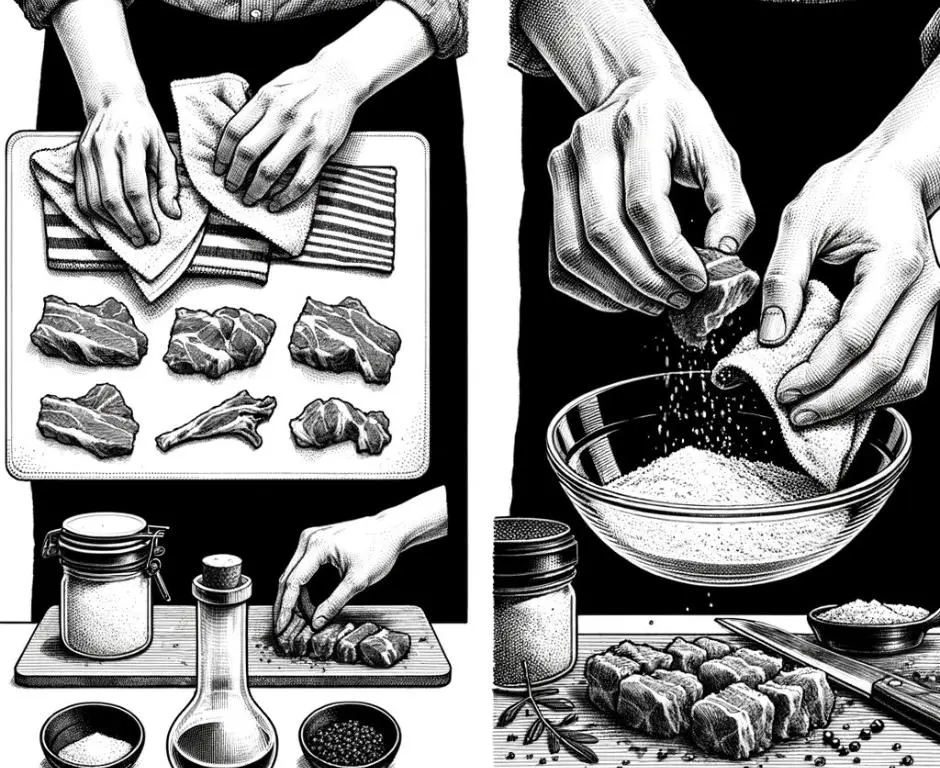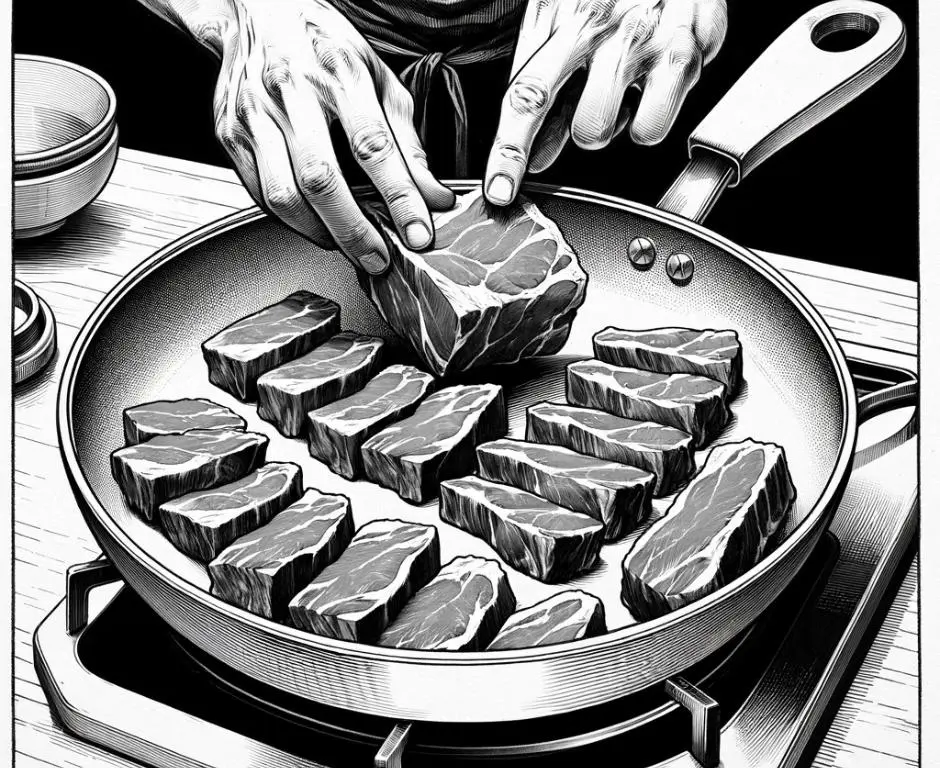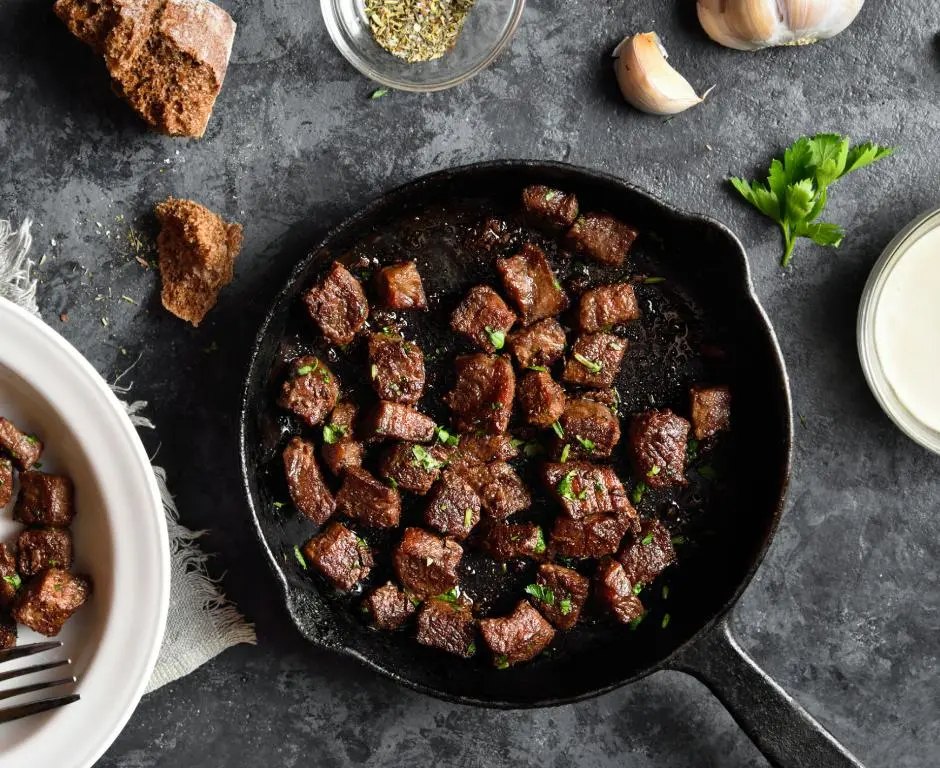Sautéing is a versatile and rapid cooking technique that is essential for any home chef’s arsenal. This method, which involves cooking food quickly in a small amount of oil or fat over relatively high heat, is ideal for many types of meat.
It delivers a nicely browned surface and tender interior, making it perfect for busy weeknights or sophisticated gatherings. In this guide, we’ll explore the intricacies of sautéing meat, providing insights into how to perfect this technique and achieve delicious results every time.
What is Sautéing?
Sautéing is derived from the French word “sauter,” meaning to jump. In culinary terms, this refers to the action of food being tossed around in a hot pan—practically “jumping” as it cooks.
This method is favored for its speed and the flavor development it offers. Typically, meat is cut into uniform, thin pieces to ensure even and quick cooking. A combination of high heat and minimal cooking fat prevents the meat from stewing in its juices and encourages the development of a flavorful crust.
Best Cuts for Sautéing
The key to successful sautéing is choosing the right cuts of meat. Here are some recommended cuts that sauté well:
- Chicken: Breast or tenderloins, thinly sliced or diced
- Beef: Tenderloin, sirloin, or skirt steak, thinly sliced against the grain
- Pork: Tenderloin or loin chops, thinly sliced
- Lamb: Leg steaks or loin chops, cut into bite-sized pieces
These cuts are lean and tender, making them quick to cook and less likely to become tough or chewy.
Step-by-Step Guide to Sautéing Meat
Equipment Needed:
- Skillet or sauté pan, preferably non-stick or cast iron
- Spatula or tongs
- Meat thermometer (optional but recommended for ensuring doneness)
Cooking Steps:
Preparation:
Start by patting your meat dry with paper towels. Moisture on the surface can cause the meat to steam instead of sauté.
Season the meat with salt, pepper, and any other spices or herbs as desired.

Heat the Pan:
- Heat your pan over medium-high heat and add a small amount of oil. Choose an oil with a high smoke point, such as canola or vegetable oil.
Add the Meat:
- Place the meat in the pan in a single layer. Avoid overcrowding the pan, which can reduce the temperature and cause the meat to steam.
- Let the meat cook undisturbed for a few minutes until it develops a golden-brown crust, then flip or stir to cook evenly on all sides.

Finishing:
- Continue cooking until the meat reaches the desired level of doneness. Use a meat thermometer to check temperatures if needed.
- Once done, remove the meat from the pan and let it rest for a few minutes before serving.
Tips for Perfect Sautéing
- Manage your heat: Keeping the pan too hot can burn the meat, while too low can cause it to release juices and simmer. Adjust the heat as necessary to maintain a steady sizzle.
- Use the right pan: A heavy-bottomed skillet or sauté pan distributes heat evenly and prevents hot spots.
- Avoid over-stirring: Let the meat develop a crust before stirring; this enhances flavor and texture.
Common Mistakes to Avoid
- Overcrowding the pan: This cools the pan down too much. Cook in batches if necessary.
- Moving the meat too soon: Allow the meat to form a crust and naturally release from the pan before trying to flip it.
Conclusion
Sautéing is a fast, effective way to cook meat that keeps it flavorful and tender. By following these guidelines and choosing the right cuts, you can master the art of sautéing and expand your culinary skills.
Whether you’re making a quick dinner or preparing ingredients for a more elaborate meal, sautéing is a technique that will serve you well in many cooking scenarios.
